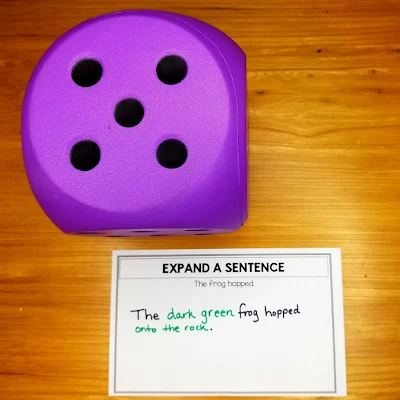Looking for ideas to help your students take their writing to the next level with elaboration? Here are 3 quick strategies to support students in expanding their ideas.
EXPAND A SENTENCE
To model give all students the same sentence. Roll a dice. Have students add that many words to the sentence. Then have students share. Discuss the different ways students added to their sentences and how it would affect the reader.
ELABORATION ROLL-A-CUBE
Randomness can be a great motivator and fosters creativity when students have to determine how to weave new ideas into their writing. Click HERE for your copy of the elaboration roll-a-cube.
CHAINING
- explode an idea
- clarify a point
- provide evidence to strengthen their positions.
What strategies do you use to help students incorporate elaboration in writing?
Looking to elevate your students' personal narrative writing skills? This resource includes seasonal prompts, a graphic organizer, and a choice board designed for students to practice and improve key elements of narrative writing. Click here to see more actionable tips to support students in elevating their narrative writing.






.JPG)


